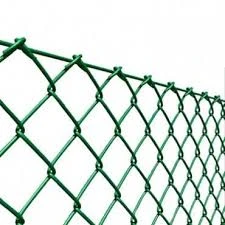Silt Fencing Installation A Comprehensive Guide
Silt fencing is an essential erosion control measure employed primarily in construction sites, landscaping projects, and any area where disturbed soil is exposed. The purpose of silt fencing is to capture sediment that can wash away from the site during rainfall or irrigation, thereby protecting water quality and preventing soil loss. Proper installation of silt fences is crucial to their effectiveness, and this article explores the steps involved in a successful silt fencing installation.
Understanding Silt Fencing
Silt fencing consists of a permeable geotextile fabric that is securely attached to wooden stakes or metal posts. The fabric acts as a barrier to suspended sediment in water while allowing water to pass through. The configuration of silt fencing can prevent soil erosion by capturing sediment on-site and reducing the amount that enters nearby streams, lakes, and other bodies of water.
Preparation for Installation
Before beginning the installation process, it's important to prepare the site. Start by identifying the areas where erosion is likely to occur and where sediment runoff can impact water resources. Consult local regulations to ensure compliance with any environmental protection guidelines.
Next, gather the necessary materials, including silt fence fabric, wooden stakes or metal posts, a shovel, and a staple gun or ties to secure the fabric to the posts. Proper measurements should also be taken to ensure that the fencing will cover the designated area effectively.
Steps for Proper Installation
1. Mark the Installation Line Use stakes or flags to mark the location where the silt fence will be installed. The fence should be positioned along the contour of the land, following any natural topography to ensure maximum effectiveness in capturing sediment and directing water flow.
silt fencing installation

2. Prepare the Trench Dig a trench that is approximately 6 to 12 inches deep along the marked line. The depth of the trench may vary depending on the site's topography. The purpose of the trench is to ensure that the bottom of the silt fence is buried, providing additional stability against water flow.
3. Install the Stakes Place the wooden stakes or metal posts into the ground at regular intervals along the trench, typically 6 to 10 feet apart. Ensure that the posts are driven deep enough to withstand the pressure of flowing water and are firmly anchored.
4. Attach the Silt Fabric Unroll the silt fence fabric and attach it to the posts using staples or ties. The top of the fabric should extend above the ground level by about 12 inches. When attaching the fabric, ensure that it is taut to prevent sagging and allow for optimal sediment capture.
5. Bury the Bottom of the Fabric As you secure the fabric to the posts, bury the bottom edge of the fencing in the trench. This step is critical for preventing water from flowing underneath the fence and carrying sediments off-site.
6. Finish the Installation Once the fabric is securely in place, backfill the trench with the excavated soil, compacting it around the base of the fabric to further stabilize the installation. Ensure that the top of the silt fence extends above the surrounding ground to effectively catch sediment-laden water.
Maintenance and Monitoring
After the installation, regular maintenance and monitoring are essential. Inspect the silt fence periodically, especially after heavy rainfall, to check for damage or sediment buildup. Remove any accumulated sediment as needed and repair any breaches to maintain the fence’s effectiveness.
In conclusion, proper installation of silt fencing is vital for effective erosion control and environmental protection. By following the outlined steps, individuals can ensure that their silt fences serve their purpose, safeguarding natural water sources and preserving the integrity of the land.
















